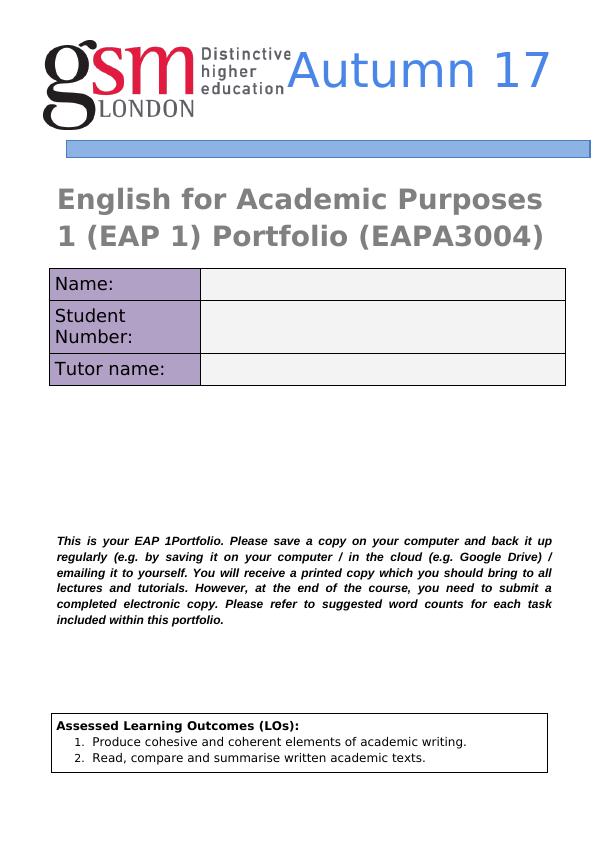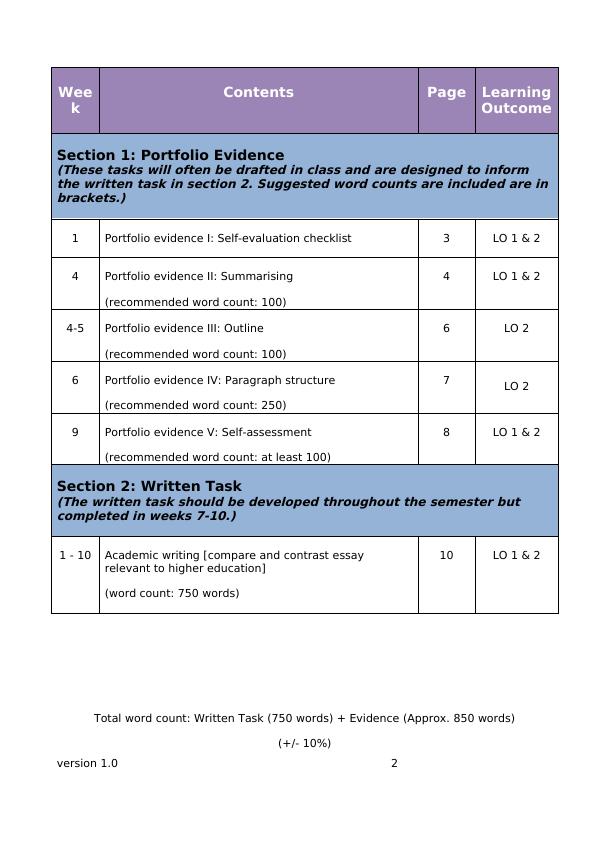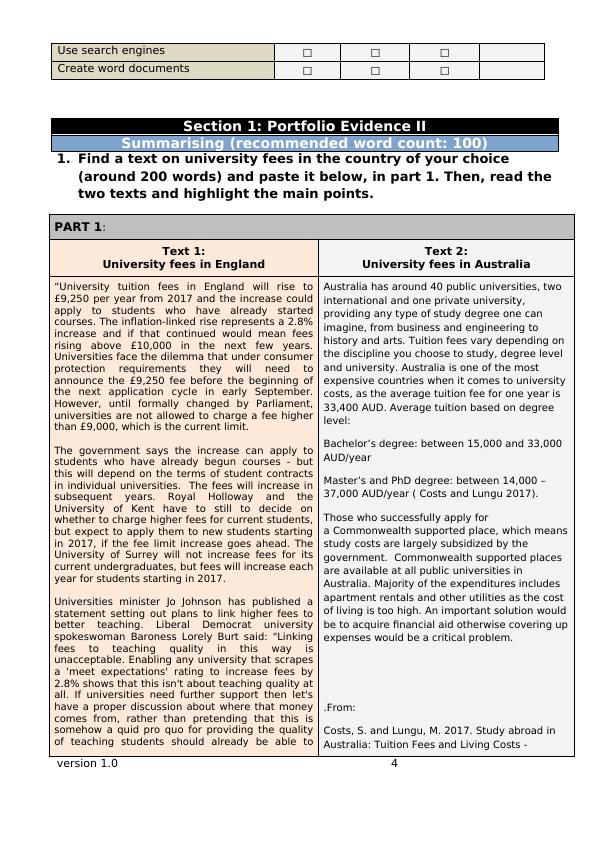Autumn 17 English for Academic Purposes 1 (EAP 1) Portfolio (EAPA3004) Name: Tutor Number: Student Number: Tutor Name: Tutor Name
13 Pages4716 Words303 Views
Added on 2020-04-21
About This Document
Suggested word counts are included are in brackets.) 1 Portfolio evidence I: Self-evaluation checklist 3 LO 1 & 2 4 Portfolio evidence II: Summarising (recommended word count: 100) 4 LO 1 & 2 4-5 Portfolio evidence III: Outline (recommended word count: 100) 6 LO 2 6 Portfolio evidence IV: Paragraph structure (recommended word count: 250) 7 LO 2 9 Portfolio evidence V: Self-Portfolio (recommended word count: at least 100) 8 LO 1 &
Autumn 17 English for Academic Purposes 1 (EAP 1) Portfolio (EAPA3004) Name: Tutor Number: Student Number: Tutor Name: Tutor Name
Added on 2020-04-21
ShareRelated Documents
End of preview
Want to access all the pages? Upload your documents or become a member.
Autumn 17 English for Academic Purposes 1 (EAP 1) Portfolio (EAPA3004) Name: Tutor Number: Student Number: Tutor Name: Tutor Name
|14
|4590
|431
EAPA3004 English for Academic Purposes Assignment
|14
|4898
|50
EAP 1 Portfolio
|15
|4660
|186
EAP 1 Portfolio: Title, Meta Title, Meta Description, Slug, Document Type, Type of Assignment
|13
|3506
|65
EAPA3004 English for Academic Purposes
|16
|4674
|123
EAPA3004 English for Academic Purposes - Assignment
|15
|4818
|90




